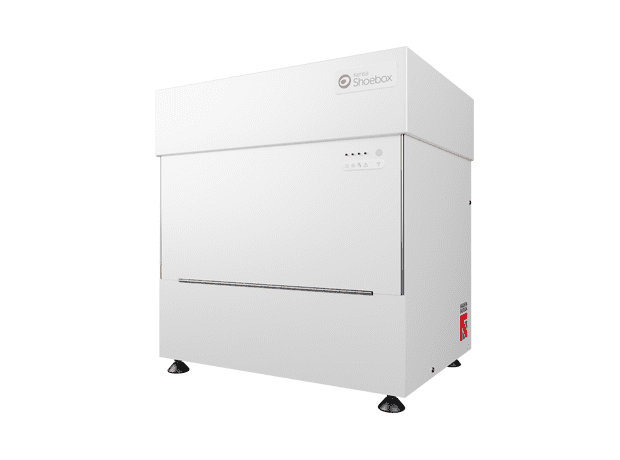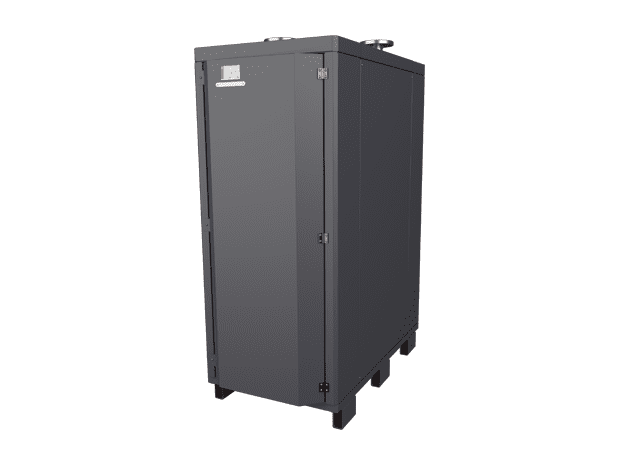Our Technical Director, Guy Cashmore, explains that whilst the design of the ground side of a ground source heat pump installation is key, the design of the hot side is equally important for efficient performance.
Water temperatures & designing the difference
The energy efficiency (or Coefficient of Performance, CoP) of any heat pump that uses a conventional refrigerant – like R407C, R134a, R410A – is massively affected by the output water temperature – this is known as the condensing temperature by heat pump engineers. As the temperature goes up, the efficiency goes down – typically at around a rate of 2% efficiency loss for every 1°C rise. This is the physics of heat pumps and they all behave in the same way, although if you believed the marketing blurb from some manufacturers you might be given to think otherwise!
So the overarching design principle for any heating distribution system that uses a heat pump is to keep the output water temperature as low as possible for as much of the time as possible. Underfloor heating (UFH) is a good match for a heat pump because it usually uses lower water temperatures, but if the plumbing design is wrong or the hot water control strategy is wrong, then the efficiency advantage of using UFH can very easily be lost.
The usual practice – fossil fuel boilers
With a fossil fuel boiler, its efficiency is much the same at all operating temperatures, so it is quite normal practise to: operate a system boiler continuously at 65°C to 75°C all year round; use a ‘mid-position’ 3-port diverter valve to control between heating and hot water or hot water only (summer); use a hot water cylinder with a small coil – as it doesn’t really matter if the hot water is 10°C or 15°C lower than the boiler temperature; and use a 3-port thermostatic mixing valve to blend down the temperature where it feeds into the UFH.
While the above system will work perfectly well with a boiler, if we substitute a heat pump in its place we are going to get very poor performance indeed.
Achieving high efficiencies with heat pumps
So heating domestic hot water (DHW) and serving space heating simultaneously is not a good idea, which usually rules out using thermal stores and similar devices. Conventional design hot water cylinders simply fitted with larger-than-standard coils give performance almost as good as anything possible; tank-in-tank and plate heat exchanger designs can work very well though they are rarely worth the additional cost, so the current preferred choice at Kensa is a conventional cylinder fitted with a larger coil to match the heat pump size. When heating the DHW, a ‘short sprint’ to high temperature is much preferred as it will keep the overall efficiency higher – the heat pump returns to lower temperature operation sooner – so 3-port true diverter valves are the order of the day, not mid-position types.
The heating distribution system and emitter design will have the lion’s share of effect on the overall system efficiency; keeping the temperature down and the flow rates up are the key objectives.
Key mistakes to avoid – mixing loops
A very common error is to accidentally create mixing loops causing temperature loss between heat pump and emitter. These can take several forms and aren’t always obvious. The most common ones we see are certain types of underfloor heating manifold, pressure bypass valves, thermostatic mixing valves and buffer tanks using four connections. Simple distribution systems using relatively large pipe diameters invariably work the best, ideally using a reverse-return layout. The need for buffer tanks can sometimes be avoided altogether by using the heating distribution system itself as the buffer, but where they are deemed necessary they should only be connected with two pipes rather than four, as otherwise they allow mixing causing permanent temperature loss.
In conclusion
The choice of emitters is huge. Essentially, any design that will heat the building effectively using the lowest possible water temperature is good; as far as heat pump efficiency is concerned, the water temperature really can’t be too low.


This article was published in Installer magazine (Setpember 2015, issue 225).







